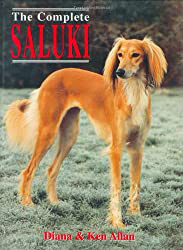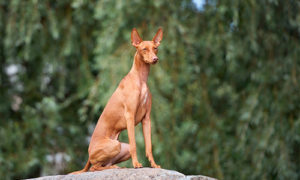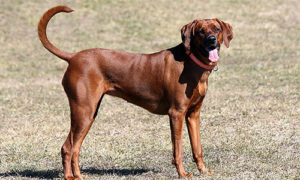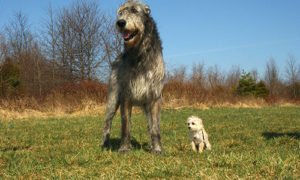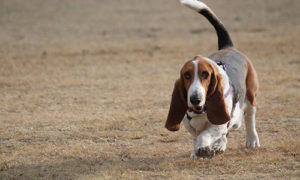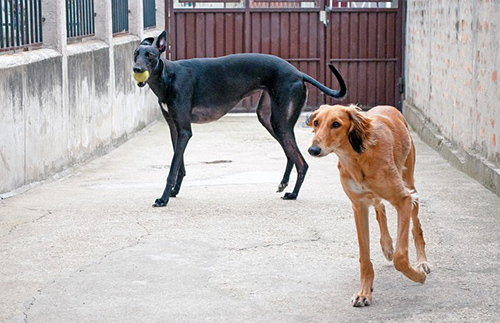
The Saluki was a highly prized hunting dog throughout the Middle East for thousands of years, used for coursing and hawking. In 1840, the dog made its way to Britain, where it earned the nickname the Persian Greyhound. The people of Britain used the dog for hare coursing.
The nineteenth-century breeder Florence Amhurst began importing dogs to Norfolk, England, in 1895. Breed historians credit her with promoting the breed at shows and was instrumental in founding the first club and getting it recognized. Salukis were first imported to America from Thebes in 1861.
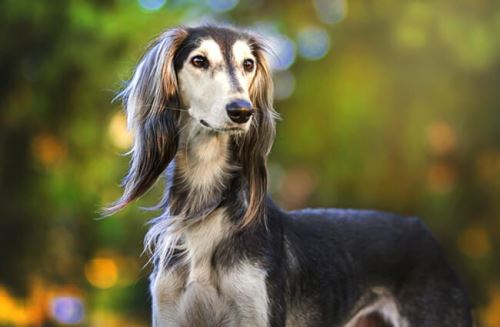
The breed standard calls for a dog whose appearance gives “an impression of grace and symmetry as well as high speed and endurance coupled with strength and activity.
True to its origins, this dog is an athletic sighthound with a graceful outline, a broad, muscular back, and a slight arch over loin; and a long, low-set tail carried in a curve. It has a long, narrow head, long ears hanging close to the head, and large, oval eyes, giving it a far-seeing expression.
Saluki Breed Facts

- POPULARITY: Not common
- FAMILY: Sighthound
- AREA OF ORIGIN: Middle East
- DATE OF ORIGIN: Ancient times
- ORIGINAL FUNCTION: Coursing hare and gazelles
- TODAY’S FUNCTION: Lure coursing, open-field coursing
- OTHER NAME: Gazelle Hound, Persian Greyhound, Tazi
Activity level: The breed is famed for its speed and endurance. They have a strong hunting instinct and will chase any small animal. Therefore, never exercise them off the lead. Car accidents are the number one cause of death of young Salukis. This breed will need daily running in space surrounded by 5—6-foot fencing. They love lure coursing, flyball, oval track racing, scent hurdling, agility, and tracking.
Year of AKC recognition: 1929
Grooming
These dogs only require weekly brushing
Coat: This breed has two coat varieties. The Feathered variety is smooth, soft, and silky in texture, with feathers on the legs, back, thighs, toes, tail, and ears. The Smooth variety is the same without the feathering.
Color: White, cream, fawn, golden, red, grizzle and tan, tricolor, and black and tan
Saluki Temperament
These dogs are spirited, dignified, and gentle sighthounds with an independent nature. Salukis are affectionate with their owners but reserved with strangers and must have ongoing socialization. Noted for their meticulous habits, they make excellent house dogs. Salukis do best with gentle, patient training from a trusted owner. They respond well to clicker training.
Health
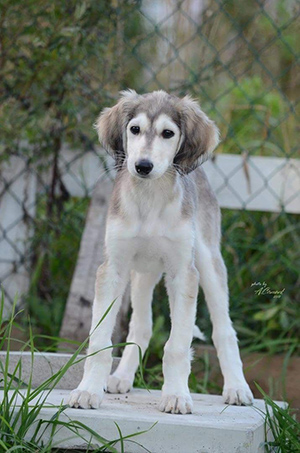
- Major Concerns: hemangiosarcoma
- Minor Concerns: cardiomyopathy
- Occasionally Seen: hypothyroidism
- Life Span: 12—14 years
- Suggested Tests: cardiac, thyroid
- Note: this breed is sensitive to barbiturate anesthesia
- Weight: 35—65 pounds
- Height: male: 23—28 inches; female: may be considerably smaller
Saluki Buyer’s Advice and Guide
Educate yourself by meeting experienced owners and breeders. Consider adopting an adult rescue dog. Find a responsible breeder through the SCOA.
Parent club: Saluki Club of America; founded in 1927
Regional clubs: Regional club information is available under “Other Saluki Organizations” on the parent club’s website
Rescue: Information is available on the “Saluki Rescue” page under “About Salukis” on the parent club’s website

